Climate-friendly and biodegradable packaging is packaging that can enter the natural cycle without harming the environment.
This makes it an active weapon in the fight to eliminate the accumulation of plastic in the oceans.
It is therefore instrumental;
- to conserve wildlife and
- Improving the living conditions of endangered species.
But why can we call our packaging climate-friendly packaging and biodegradable packaging.
We can because our packaging is approved by the following certifications:
- DIN CERTOCO EN 13432
- OK compost INDUSTRIAL
- FSC
- Organic
Our packaging is therefore certified organic biodegradable and industrial compostable.
This is what makes it an environmentally friendly and climate-friendly packaging.
This means that the packaging meets a number of strict EU standards that ensure quality and degradability go hand-in-hand – as well as legal requirements for food packaging.
Sustainability and naturalness is one of the core values JYYNA is built on, which is why it is essential that our packaging is just that.
So sustainability is something we are, and not just dream of being.
The reason we choose to only have certified biodegradable packaging is that we can be sure that the biodegradation process can take place within a time frame of just 3 months.
This way, visual pollution is reduced and our packaging enters nature’s cycle much faster.
You can learn more about the process, the requirements and why the time frame is 3 months in this article, where you can also read about:
- the nuances of the tests you use and
- how to specifically achieve certifications.
- What role PLA plays in packaging and what it is and
- Learn more about the layers that make up our packaging
But first we start with the certifications… 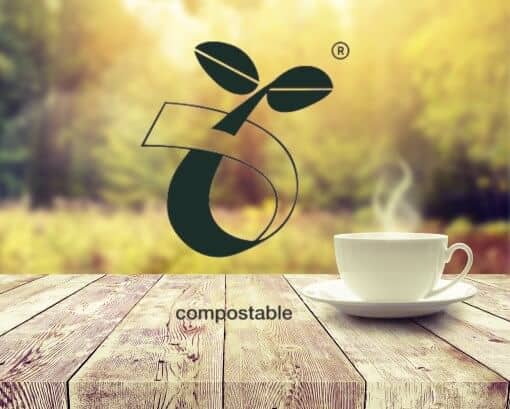
Table of Content
1. EN 13432 Certification
The first secret I’d like to share with you is that the packaging our tea is packed in is CERTCO DIN EN 13432 certified.
DIN EN 13432 is an EU harmonized technical standard that food packaging can be certified to if it meets a number of requirements for biodegradability.
This certification is designed to help the consumer (both you and I) to recognize when a packaging is actually biodegradable.
The word biodegradable is not protected.
You can therefore call your packaging biodegradable if you (as a company) can argue that the packaging can be degraded through anaerobic or aerobic degradation within a reasonable time.
This creates a lot of confusion and uncertainty.
Because what is a reasonable time?
It is precisely this confusion and uncertainty that the DIN EN 13432 certification addresses (you can recognize it by the seedling logo you see in the image above).
That’s why we only pack JYYNA tea in packaging with this specific certification (a certification our box fillings also have).
This means that our packaging (and box fillings) meet the following requirements:
- After 3 months, the materials the packaging is made of must be degraded to such an extent that there is no longer any visual contamination.
Why the packaging must be degraded to fragments no larger than 2 mm.
(tested with a sieve). - The packaging itself must be completely decomposed into organic compost within a minimum period of 6 months.
- There must also be an absence of negative effects on the composting process, which is verified through the composting tests.
- There must be a lower level of heavy metals than at normal max values, as well as an absence of negative effects on the final compost (here e.g.
reduction of agronomic values and a presence of ecotoxicological effects on plant growth).
To add to the confusion, biodegradable and compostable are also two different terms.
So even if the packaging is DIN EN 13432 certified (and therefore biodegradable) it does not mean that it is approved for composting.
This means that consumers cannot be sure that just because packaging has this certification that it is compostable.
In this area, there are also different degrees. 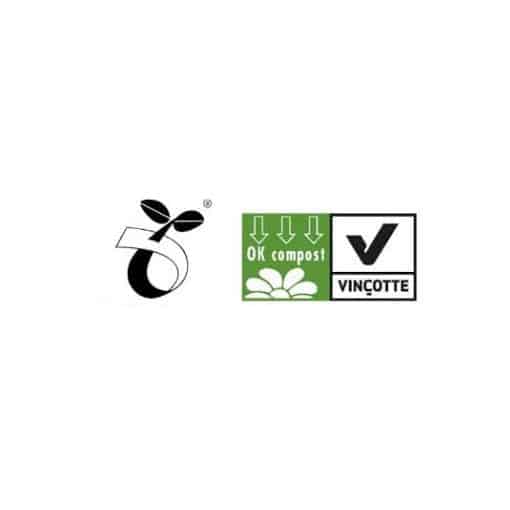
2. OK compost
At JYYNA, our packaging is also certified with OK compost INDUSTRIAL.
This is our second secret.
Precisely so that you can be sure that the packaging our teas come in is actually approved for composting.
That’s why we have chosen to go for OK compost.
However, the two certifications OK compost and DIN EN 13432 go hand in hand in this context.
Which is why it is extremely rare not to have one without also having the other.
OK compost divides their certification into two different degrees of composting:
The most significant difference is that the tests that are performed to find out what certification you can achieve are the approved temperatures.
These are the key to how the composting process works and the limit values for the ideal conditions during this process.
Precisely because both temperatures and composting conditions are lower/less optimal at home in the garden compost heap versus at the incinerator.
It all comes down to the pulp (the mass the packaging breaks down into after 3 months).
It must be able to pass the sieve test, where the requirement is that the fragments must not be larger than 2 mm.
Our packaging is approved for industrial composting – and therefore has the OK compost INDUSTRIAL certification.
This is partly because the ziplock (the closing mechanism at the top) cannot pass the ‘sieve test’ if it is composted at home.
However, our packaging is still plastic-free and therefore belongs in the organic waste category. 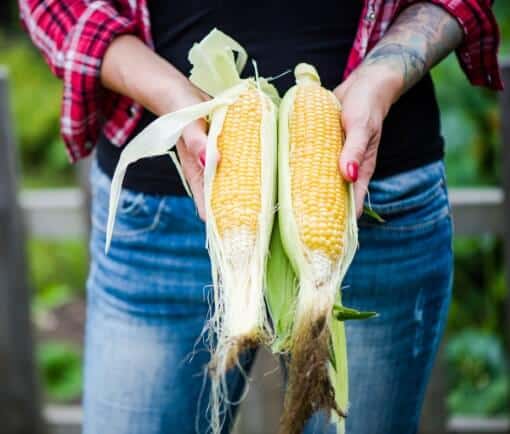
3. PLA bioplastic
Our third secret also contains a dirty word when it comes to preserving nature and protecting the world’s oceans. Namely the word plastic. Some of the elements in our packaging are made of PLA bioplastic (also called bioplastics). But in this context, the word ‘plastic’ deceives us. Because it actually has nothing to do with plastic. PLA is the abbreviation for Polylactic Acid.
This is a bio-based biodegradable biomass made from recyclable resources such as fermented plant starch, like corn, cassava, sugar cane or sugar beet pulp.
In our packaging, PLA made from corn starch, sourced from European farms, is used to contain aromas and flavors.
Specifically, this is the inner barrier that keeps the tea fresh and tasty.
The intermediate layer is also made of cellulose, so although it may look like aluminum foil, it’s actually cellulose.
And of course, everything is from FSC certified resources. 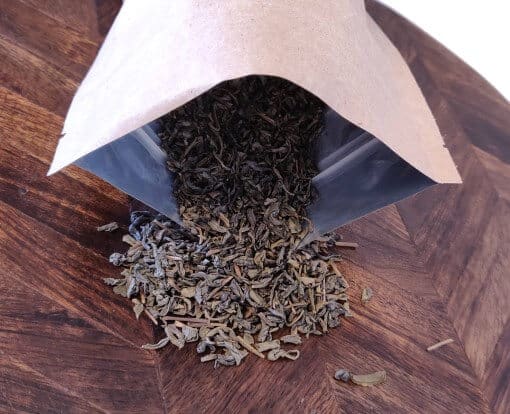
4. FSC certified
Our fourth secret is that the paper and cellulose used for our packaging is FSC certified.
FSC certification is an international non-profit labeling scheme for wood and paper.
It is your guarantee that no more wood is harvested than the forest can reproduce itself.
It also ensures that both animals and plant life are protected and that the people working in the forest are trained, properly paid and have the best safety equipment.
It’s all about environmentally sound and sustainable forestry. 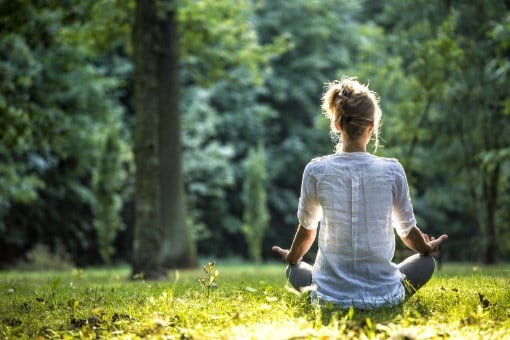
5. Organic and GMO-free
The fifth secret is a bit special, we think.
The paper used for our packaging is organic and all the materials used are GMO-free.
This means that the natural ingredients are preserved and that the agriculture used is sustainable.
Precisely because only natural ingredients are used for the materials that make up the packaging and the soil on which they grow is not depleted but preserved for the benefit of wildlife and nature.
Legal requirements for packaging
One might be led to believe that with our biodegradable packaging, the quality of the packaging will be worse.
Which couldn’t be further from the truth.
Just as there are strict requirements for certifications, there is also strict legislation that the packaging that food is stored in must comply with.
Which of course also applies to tea, as it falls into the food category.
In slightly more technical language, the packaging must be tested to see if it meets the limit values for the materials that the packaging consists of and the food is stored in.
You can read more about the Danish Food Safety Authority’s legislation here and the European harmonized legislation here.
In conclusion
Sustainability is one of our core values and something that is reflected in all our business processes.
However, there is one in particular that we are both proud of and shrouded in mystery: our packaging.
It looks a lot like the one made of plastic, and when you look at the components that make it up – with the naked eye – you can be fooled.
Our packaging is completely plastic-free and utilizes the latest technology when it comes to sustainable packaging.
The word technology is the key to understanding why it can be shrouded in mystery.
Because like every other industry, the packaging market is innovating pretty heavily, and it’s shaking up our perception of what packaging can be made of.
It also provides a lot of food for thought: why aren’t more industries adopting sustainable packaging now that the trend is ready for it?

